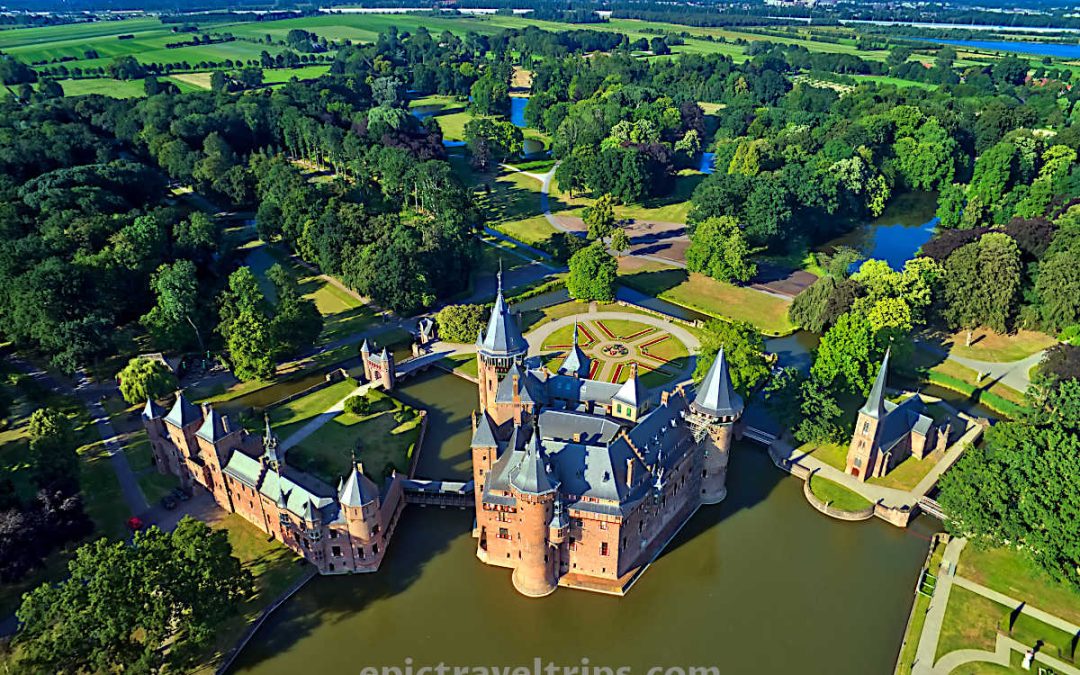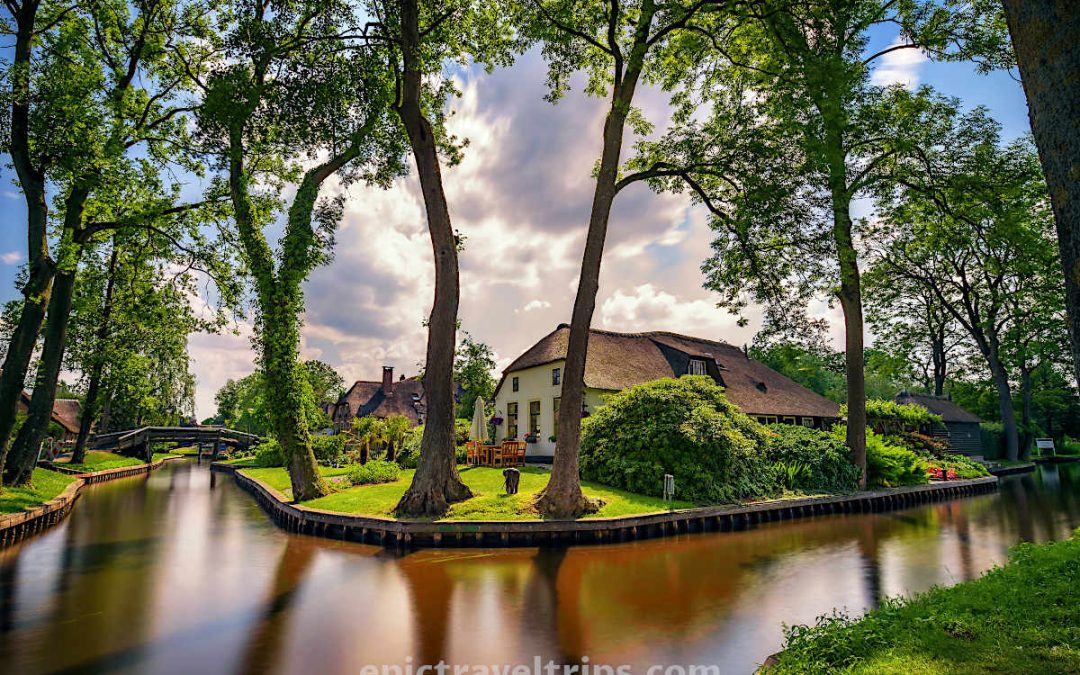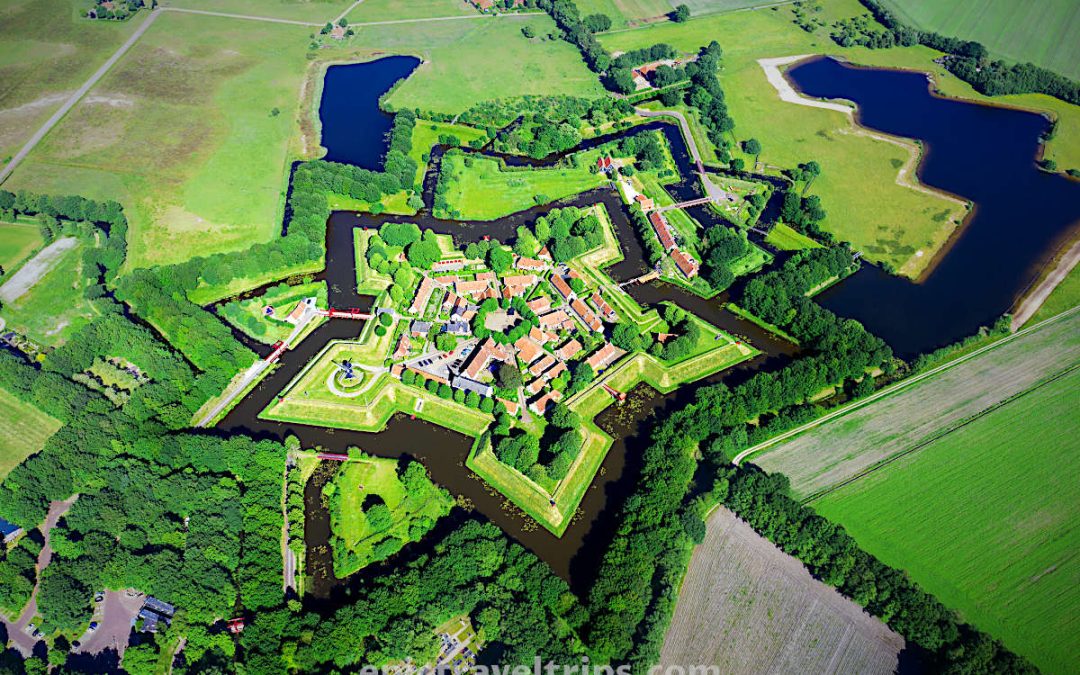- What To See
- Castle history, Restoration, Family Life
- Castle vs Fort vs Palace
- Where is located?
- How To Reach?
- How Long Does It Take?
- Where To Park?
- How Much Is The Entrance Fee?
- Opening Hours & Season
- When Is The Best Time To Visit?
- Where To Eat?
- Where To Stay?
- What Is Nearby?
- De Haar Castle – Our Impressions
We drew a Google Map where we marked all places visited on our The Netherlands: Epic 10 Days for Perfect Itinerary Road Trip with Maps.
What To See In De Haar Castle (Kasteel de Haar)
After visiting Fort Bourtange on our first day in The Netherlands, we were eager to learn more about this part of Dutch history.
We walked to the ticket office and the complex entrance from the parking.
We walked over the small brick bridge through the gate between two towers and turned left to enter another gate into the small square (Stalplein in Dutch). Here are several buildings, the Coach House (Koetshuis de Haar in Dutch) restaurant, ticket office, entrance, and toilets.
As we enter the castle, we notice the red and white colors on the gates, doors, window shutters, and more. Family van Zuylen’s (the castle’s previous owners) coat of arms colors is red and white. The coat of arms consists of three red columns on a white field, while Van de Haar’s family coat of arms has diamonds instead of columns. This symbolism is not just visible throughout the castle but in the houses of the nearby Haarzuilens village.

De Haar Castle – Buildings, Gardens, Parks, and more…
The whole castle complex consists of several structural groups. The main structures are, of course, the buildings which include De Haar Castle, Châtelet (Gate Castle), and Castle Chapel Haarzuilens.
Around the buildings are three styled gardens Rose, Roman, and Large Court. Styled gardens further enriched the scenery with round and rectangular shapes, while flowers & plant scents added more colors and patterns to the landscape.
Moats, bridges, towers, and winding paths connect and intertwine these structures into a functional and aesthetically pleasing whole.
The park structures, such as the maze, cross pond, picnic area, and deer park, crossed & intertwined with their own winding routes, canals, and ponds, provide entertainment, privacy, attraction, romance, and mystic elements to the life in the complex. Although these structures are on the perimeter of the complex, they are as equally important as the previously mentioned structures.
Finally, out of the complex is the Haarzuilens village which adds interesting history stories as an extra dimension that tourists love to hear. More about that later in the article.
We created infographics where we mapped most of the attractions within the complex so you can easily navigate and orient yourself.
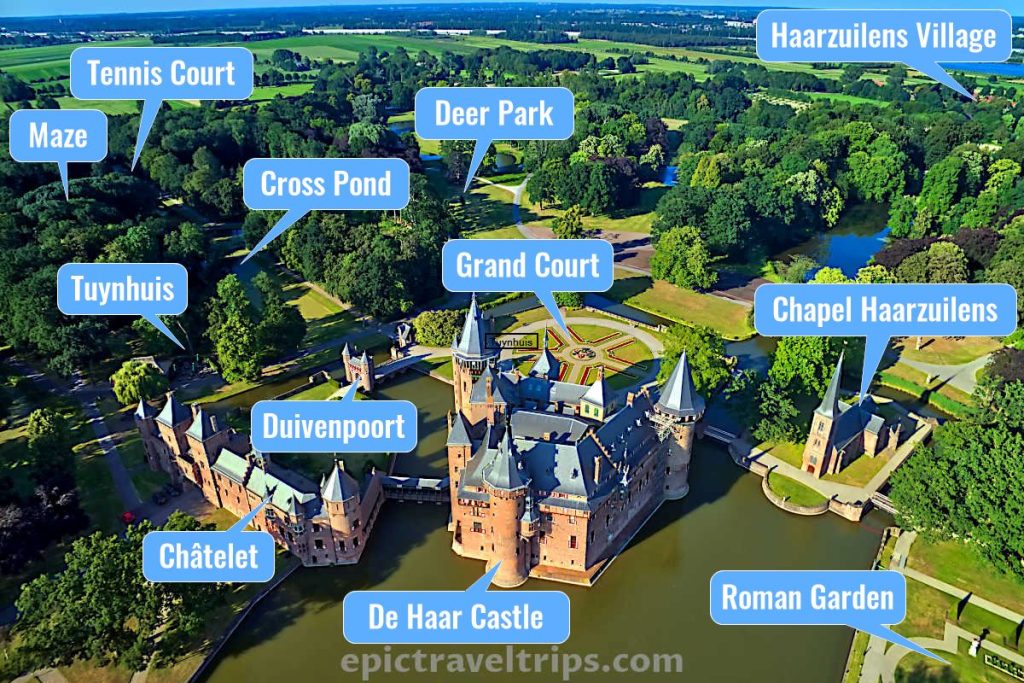
Style Gardens (Stijltuinen)
Gardens are closest to the castle buildings and for a reason. We strolled from the complex entrance up to the castle’s entrance. We walked through each park on the way. Finally, we reached the museum shop and the De Haar Castle entrance.
Each garden provides its angle, perspective, and view over the castle buildings. It is a journey that gradually builds anticipation, excitement, and expectations. It beckons you to step inside and walk through the castle’s rooms.
Let’s discover each of the gardens and their stories and secrets.
1 – Rose Garden (Rozentuin)
A short walk from the entrance and we were in the Rose Garden (Rozentuin in Dutch). From here, we experienced our first impression of the castle and its surroundings. In the middle is De Haar Castle, on the right is Castle Chapel Haarzuilens, and on the left is gate castle or The Châtelet. This spot is the wow effect and is up to the task.
The Rose garden is rectangular. The garden archway arbor in the middle divides the park in two.
A well is in the middle under the iron and stone gazebo on one half. Eight walkways as rays extend from the well and gazebo. We felt that the well and walkways symbolized the spring of life that spread in all directions.
There is a symmetrically shaped pattern on the other half. The low green hedge curve-shaped lines separate red and white pebble patterns. Red and white colors of the family’s coat of arms again. We understood these maze-shaped patterns represented the complexity of life.
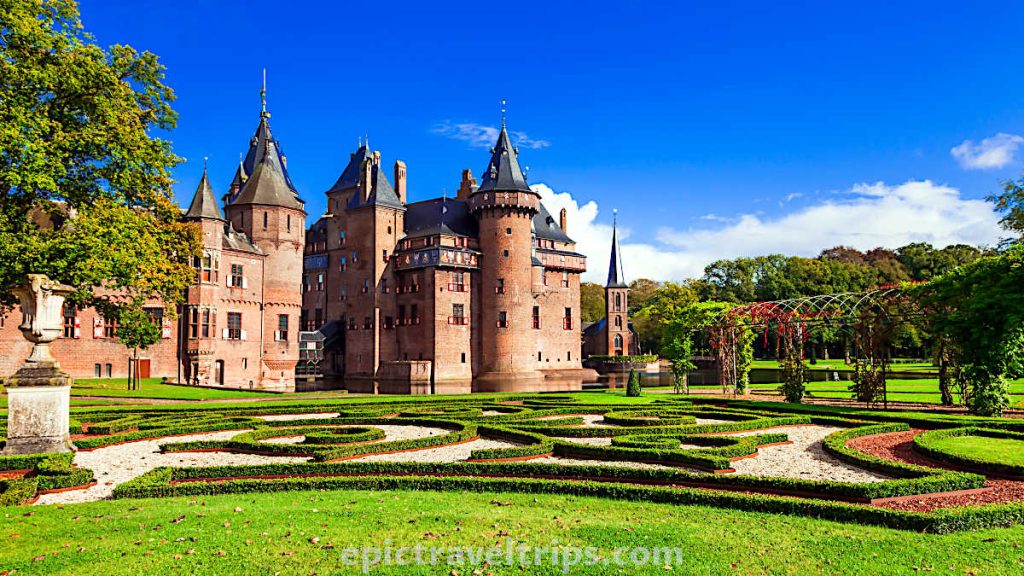
Finally, a broken white column is in the middle of the Rose Garden and within the archway arbor. The white column is again one of the symbols in the family’s coat of arms. Now is the time to reveal the story and reason for this garden’s existence and design.
The broken white column is the monument in memory of Etienne’s eldest son, Baron Hélin van Zuylen van Nijevelt. He died in a car accident in Rumst near Antwerp in 1912 at 24 years old.
The broken column refers to Baron Hélin’s life ending too soon.
2 – Roman Garden (Romeinse tuin)
The Roman garden (Romeinse tuin in Dutch) has a rectangular shape with fully rounded corners. Such a shape was a base form for a Roman chariot-racing stadium, for example, Circus Maximus in Rome. We have never visited Rome, but we visited Perge’s ancient city in Turkey. From Perge Acropolis, we could envision the shape of the Roman Perge chariot-racing stadium with estimated 12 000 seated spectators.

This Roman garden is smaller than the two stadiums mentioned above but no less impressive, to say at least. Please notice green grass pitches and three mini gardens in the middle with white and red flowers. Again symbolism of the castle’s coat of arms.
We certainly did not feel we were on the chariot racing track, but we had a funny game with the garden water hoses. The gardeners were moving the stands from the garden watering system, and we had to run away from the semi-controlled stream of water that splashed across the garden.

Ha Ha Design Style
I climbed the small rampart at the end of the garden to find the best place to photograph the garden and the castle. Here, we noticed the garden’s designer’s brilliance and detail of the “Ha Ha” design (French: hâ-hâ or saut de loup). We could see a moat, asphalt road, garden hedge, and golf terrain from the rampart’s top.
We moved to the other side of the Roman Garden near the moat and the closest to the castle. When we turned around and looked in the rampart direction, the asphalte road, moat, and hedge weren’t visible. The elevated rampart makes unnecessary details invisible, and the HA HA illusion becomes completely understandable.
The garden’s shape, design, details, colorful flowers, and interestingly shaped bushes as tall pyramids additionally decorated the landscape of the castle. It was time to go one step closer to the castle’s entrance and see the next garden.
3 – Grand Court (Grote Cour)
We crossed a small wooden bridge and passed by the Castle’s Chapel Haarzuilens. Around the corner was another small wooden bridge, and the space opened up, finally. On the left-hand side are the other side of the De Haar Castle and the entrance to the castle’s rooms. The third and final garden Grand Court (Grote Cour in Dutch), is on the right-hand side.
This garden has a circular shape with outer gravel pathways leading to different parts of the complex. A low metal rail border the garden’s circle. A small circle garden is in the dead center with the family coat of arms. Five walkaways ray from the garden’s center and blends with the outer gravel path. Red and white flowers are dominant within grass patches.

So far, we have looked at the gardens and the buildings from the outside. Now is the time for a new, bold, and different step and peek into the castle interior.
Buildings (Gebouwen)
Before we step inside, we would like to introduce and describe the main buildings in the castle’s complex.
4 – De Haar Castle (Kasteel de Haar)
De Haar Castle is the largest in the Netherlands. Its luxury can compete with many French, German, or Austrian castles. Although this is the castle, there is no military purpose attached to it, but a representative and glamorous function is more than obvious.
We wish that walls could talk. They are the best historians and keep the greatest secrets, the bohemian lifestyle mystic, and the castle’s lavish and extraordinary history.
Let’s go back to the castle elegancy. The most prominent structures that strike our eyes were three rounded turrets (again symbolic of three columns from the coat of arms) naturally attached to the isosceles trapezoid-shaped walls with many corners and bay windows. Small bricks used to build the walls and towers give an interesting chessboard pattern to the castle’s design. Many windows of different sizes and shapes, mostly narrow and tall, have shutters in red and white colors (by now, we all know why these colors, right).

There is a wooden extruded structure on the left side of the closest circle turret when looking from the Roses garden. We can see both families’ coats of arms. Family Van de Haar has three white diamonds on the red shield, and family Van Zuylens has three red columns on the white shield coats of arms.

Many small gray slates decorate the roofs like fish scales.
From the 1950s, De Haar Castle was only used to receive guests in September (Septemberbewoning in Dutch) while the family lived in Châtelet for practical reasons.
5 – Châtelet
When you come to the Rose Garden, Châtelet is on the left-hand side of the De Haar Castle and is connected with the castle by a wooden bridge and a closed passage above the bridge.
Châtelet consists of two square towers and the gate in between, with two large wings and a Little Court (Kleine Cour in Dutch). Some call it “a small castle” or the gate castle, but it is the most significant outbuilding of De Haar Castle anyway.
You can see it in the photo below on the left side of the main castle.

Initially, the gate castle’s purpose was to accommodate modern installations from the late 19th and early 20th century, such as boilers, pumps, water and ice cellars, and storage space. The heating system used peat or coal as the predominant fuel. Interestingly enough, we heard about peat digging in Holland just a few days before.

Ice cellars were pre-fridge ice storage facilities, significant and a sign of luxury among the rich. Importing the ice was a huge business opportunity as well. We visited “Ice Road” at Bondhusvatnet Lake and Glacier in Norway, where we learned about the ice export business.
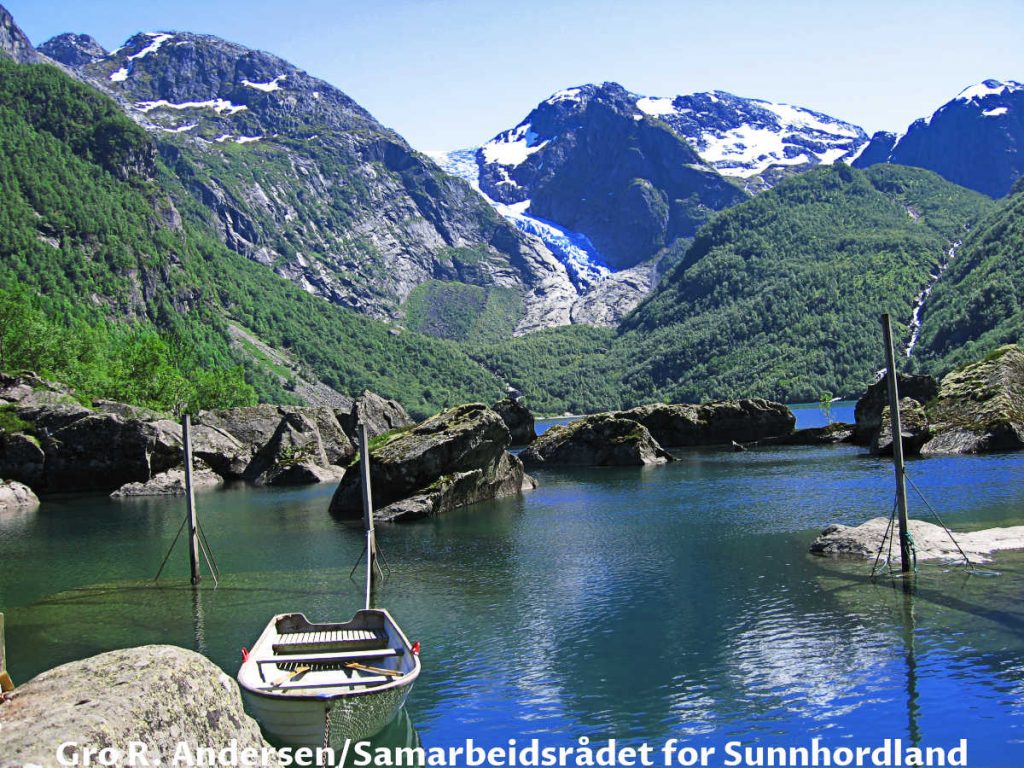
Later Châtelet served as a service residence for attending staff, extra guest rooms, and apartments for the sons. From the 1950s, the Van Zuylen van Nijevelt family used the Châtelet as a family home.
The third gate in the castle (called Duivenpoort) connects the Little Court (Kleine Cour in Dutch) with the Grand Court (Grote Cour in Dutch). Duivenpoort Gate consists of two rounded towers and a stone bridge. White bricks, stones, wooden beams, and ledger boards beautifully decorate all these elements.
6 – Castle Chapel Haarzuilens
Castle Chapel Haarzuilens is on the right-hand side and further back of the De Haar Castle when you come to the Rose Garden.
The Chapel is the last reminder of the old village of Haarzuilens. Haarzuilens village was next to the castle in the past, and many villagers worked in it.
In the photo below, you can see it on the right in the back.

Restoration of the castle included the chapel restoration, which became Castle Chapel Haarzuilens. Initially, it was Roman Catholic, but with the reformation became Protestant.
We found that young couples could rent the chapel for a wedding ceremony, but we did not dare to ask for a price.
The Parks (Park)
Many parks are on the outer edges of gardens. The influence of the French castles and palaces, especially Versailles, is more than obvious.
7 – Maze (Doolhof)
Maze (Doolhof in Dutch) is a video game from the past. Maybe not thrilling as today’s VR games, but we tried it anyway.
Maze is not far from the castle and was entertaining. After a few tries and errors, we found the exit, Hurray!
8 – Cross Pond (Kruisvijver)
Cross Pond (Kruisvijver in Dutch) is next to the Châtelet and Tuynhuis eating place. We passed by the pond on our way to the maze. It was full of green pond scum on the surface, so we decided to skip it.
However, the pond has two rounded extensions, one in the middle and the other at the end of the pond.
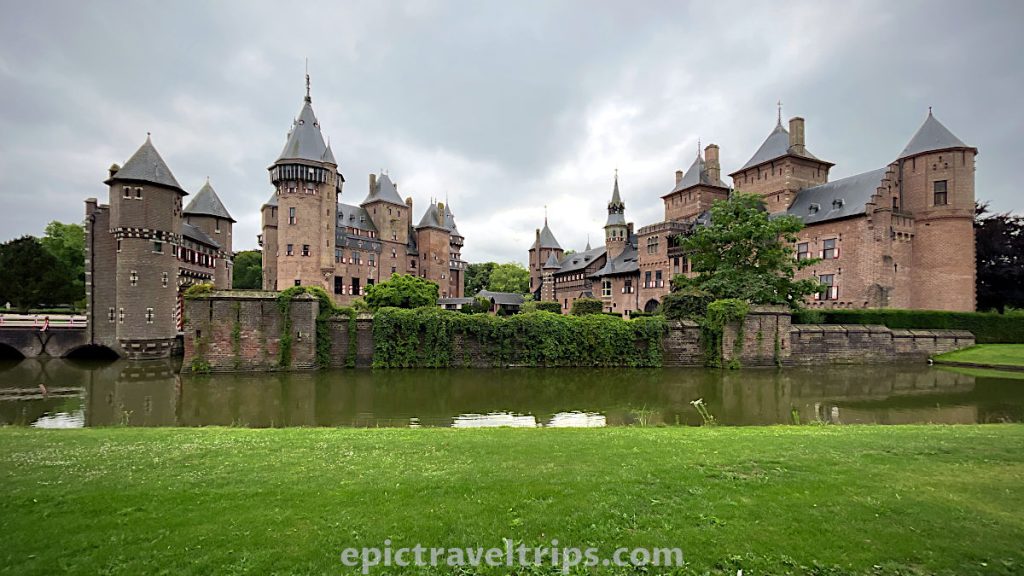
9 – Deer Park (Hertenkamp)
When you cross the small wooden bridge next to the Châtelet and Duivenpoort Gate just in front of the Cross Pond, instead of going left, to the maze and Tuynhuis eating place, turn right to the picnic area and Deer Park (Hertenkamp in Dutch).
If you are lucky enough, you will see small Bambis cheerfully jumping around.
10 – Tennis Court (Voormalige Tennisbaan)
The tennis court is next to the maze. It has seen better days for sure. If the family wants to continue the inviting celebrities tradition (September Gatherings) in the new millennium, they might invite Roger Federer, Rafael Nadal, or our favorite Novak Djoković.
Maybe Roger Federer can exchange a few lethal forehands, serve, and volleys while Novak Djoković strikes back with excellent footwork and speed. Certainly, Rafale Nadal’s speed, agility, and explosiveness will be the most effective since the tennis surface is clay.
Village (Dorp)
11 – Haarzuilens
The ancient village Haarzuilens was next to the castle in the area of the current Roman Garden. The villagers could find shelter behind the castle’s walls in case of imminent danger during the unstable middle ages. As part of the restoration at the end of the 19th century was a project of village relocation 1.5 km to the east. This is the present village location.
‘t Wapen van Haarzuilens restaurant and inn is worth visiting in the village.
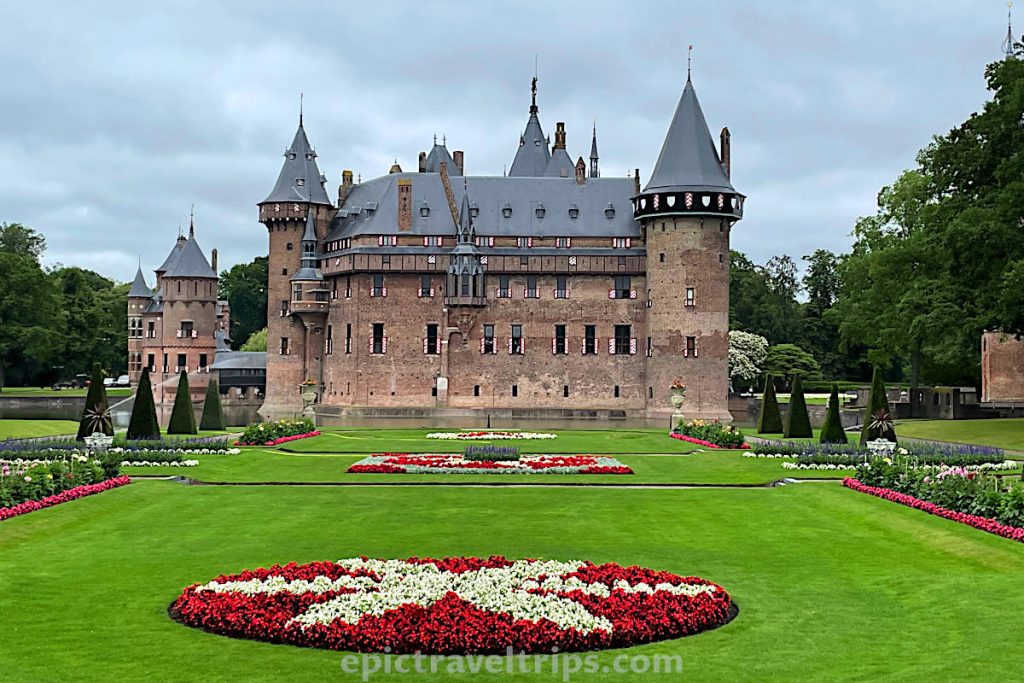
De Haar Castle – Interior
From the basement to the top floor, there is room after room with different designs, functionalities, and styles.
In the basement are predominantly kitchen facilities with lots of copper kitchenware and other kitchen utensils and appliances. There is a butcher area for making the best cuts and preparing delicious meat dishes.
The ground floor has the main hall, dining room, knight’s hall, library, ballroom, and more.
The first floor occupies rooms for guests and family members.
12 – De Haar Castle (Kasteel de Haar) – Enterior
The ballroom is quite spacious and full of different art pieces from all around the world.
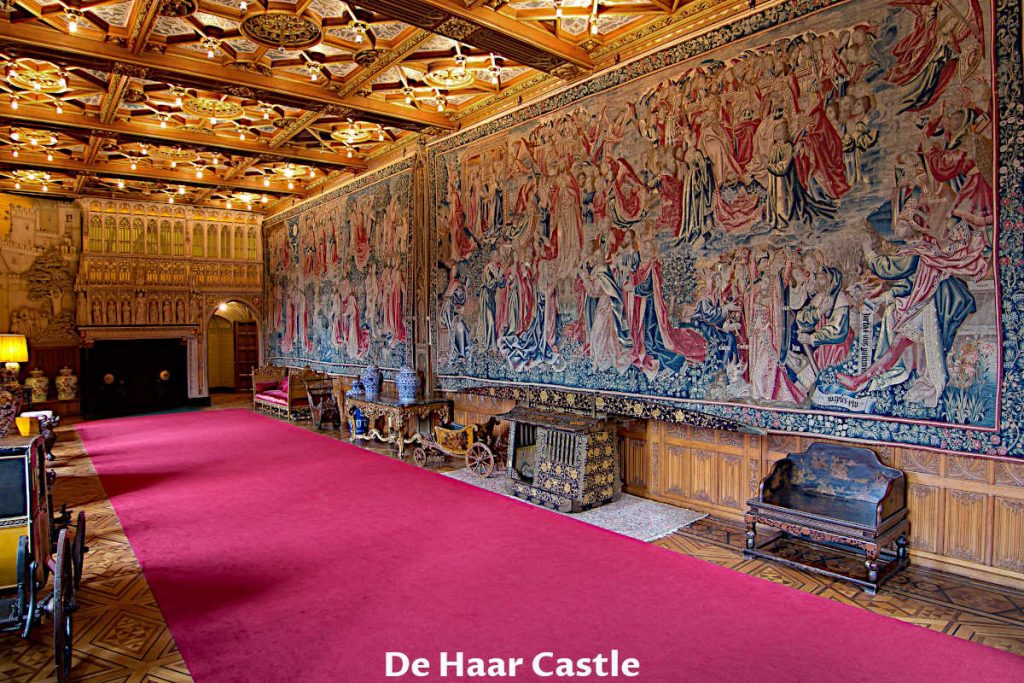
No wonder the kitchen in the basement is enormous after seeing the dining room with luxurious paintings, an astonishing ceiling chandelier, and a long dining table.

Finally, Baroness’s room is just the cherry on the cake top. Pink curtains and the whole pinky feeling were dreamy.

What is De Haar Castle (Kasteel de Haar)?
De Haar Castle is the largest and most luxurious castle in the Netherlands!
It has a long and rich history but can tell stories about the castle’s flamboyant inhabitants. We will reveal these names in a minute.
De Haar Castle (Kasteel de Haar) – History
De Haar Castle is a medieval castle.
Here is a short De Haar Castle history timeline:
- 1391 the De Haar family received the castle and the surrounding lands as a fiefdom from Hendrik van Woerden.
- 1440 last male De Haar heir died childless, the castle then passed to the Van Zuylen family by marriage
- 1482 the castle was burned down and destroyed
- 1554 the oldest image of the castle
- 1887 Baron Etienne van Zuylen van Nijevelt marries the immensely wealthy French Baroness Hélène de Rothschild.
- 1892 – 1912 extensive castle rebuilt to the present look
- 1934, Baron Egmont inherits the castle
- 1960, Baron Thierry inherits the castle
- 2000, the family Van Zuylen van Nyevelt passed ownership of the castle and the gardens to the foundation Kasteel de Haar
- 2011, the death of the last male heir Baron Thierry
- Today, Baron Thierry’s five daughters continue the family legacy living on.

De Haar Castle (Kasteel de Haar) – Restoration
The marriage between Baron Etienne van Zuylen van Nijevelt and Baroness Hélène de Rothschild was a turning point for the revival of the castle to its previous glory and beyond.
- 1892 – 1912, Baron Etienne contracted famous architect Pierre Cuypers for the restoration of the castle.
- His name is most frequently associated with the Amsterdam Central Station (1881–1889) and the Rijksmuseum (1876–1885), both in Amsterdam.
- The construction of the Châtelet started in 1893 after a design by Joseph (Jos) Cuypers, son of the architect Pierre Cuypers.
In the photo below you can see the Amsterdam Central Station and you can read more about Amsterdam in our detailed article.

The castle was equipped by Cuypers with the most modern gadgets of that time:
- electrical lighting with its generator, and central heating by way of steam
- The kitchen was for that period also very modern and still has a large collection of copper pots and pans and an enormous furnace approximately 6 meters long, which is heated with peat or coals
- Hot and cold running water, central heating, electricity, a Turkish bath, a state-of-the-art kitchen, and a passenger lift.

Baron Etienne and Baroness Hélène Lives
The baron’s way of life was anything but medieval. He was one of the first automobile and aircraft champions and president of the ‘Club Automobile de France’ and the ‘Aéro Club de France’. He also played a significant role in this field in the Netherlands. That is why he became honorary chairman of the Dutch Automobile Club. During this period, Etienne organized 1898 a car rally between Paris and Antwerp.
We can confirm that people in The Netherlands were automobile-driving pioneers. When we visited Vindhellavegen King’s Road in Norway, we saw a monument that the first driver that drove this tricky road nicknamed “Netherland Beduin”.

September Tradition
After WWII, the family decided it was time to open the property (the castle, gardens, and parks) to the public. In exchange, the family kept the property for themselves exclusively for one month, usually in September each year.
Before that, it was a family tradition to reside on the property for one month a year in September.
Baron Thierry continues the legacy of a bon vivant lifestyle and international jet set, becoming regular guests in the castle, Coco Chanel, Roger Moore, Brigitte Bardot, Gregory Peck, Joan Collins, Maria Callas, Yves Saint Laurent, and many more.
The popularity of the above names combined with never forgotten Cinderally happily ever after (in the dreamy fairytale castle) stories made De Haar Castle a hotspot that filled society sections of many lifestyle magazines. It is no wonder that some decide to arrange wedding ceremonies. So they feel the vibe of that magic on the most important day of their lifetime.

What Are The Differences Between A Castle, A Palace, and A Fort/Fortress?
A fort is a military fortification for a smaller permanent or temporary military unit. The military defense purpose is the primary building requirement. On our first day in the Netherlands, as soon as we crossed the German border, we stopped by Fort Bourtange. For the best defense of the territory from the weaponry of that time, it has the specific shape of a pentagon, and each bastion (peak) is the shape of a spearhead.

A fortress is another strongly fortified military stronghold but a lot bigger than a fort and fit for a large garrison. We visited Bergenhus fortress in Norway as one typical European fortress example.

A castle is a large building or group of buildings fortified against attack with thick walls, watch towers, gatehouses, turrets, and in many cases a moat. The difference between a castle and a fort/fortress is that the castle is the residence of the ruler (lord, baron, or noble). Neuschwanstein, Hohenzollern, Eltz Burg, and Windsor Castles are some of the best known.

A palace has no military purpose but serves as a residential place designed for comfort and elegance. In the palace live royalty, heads of state, or heads of a church. Versailles Palace near Paris and Schönbrunn Palace in Vienna are typical examples and represent the luxury of both palace’s exterior and interior.
Where Is De Haar Castle (Kasteel de Haar) Located?
De Haar Castle is just 13 km (8 mi.) west of Utrecht, and 25 minutes drive from the city center.
We drew a Google Map where we marked all places visited on our The Netherlands: Epic 10 Days for Perfect Itinerary Road Trip with Maps.
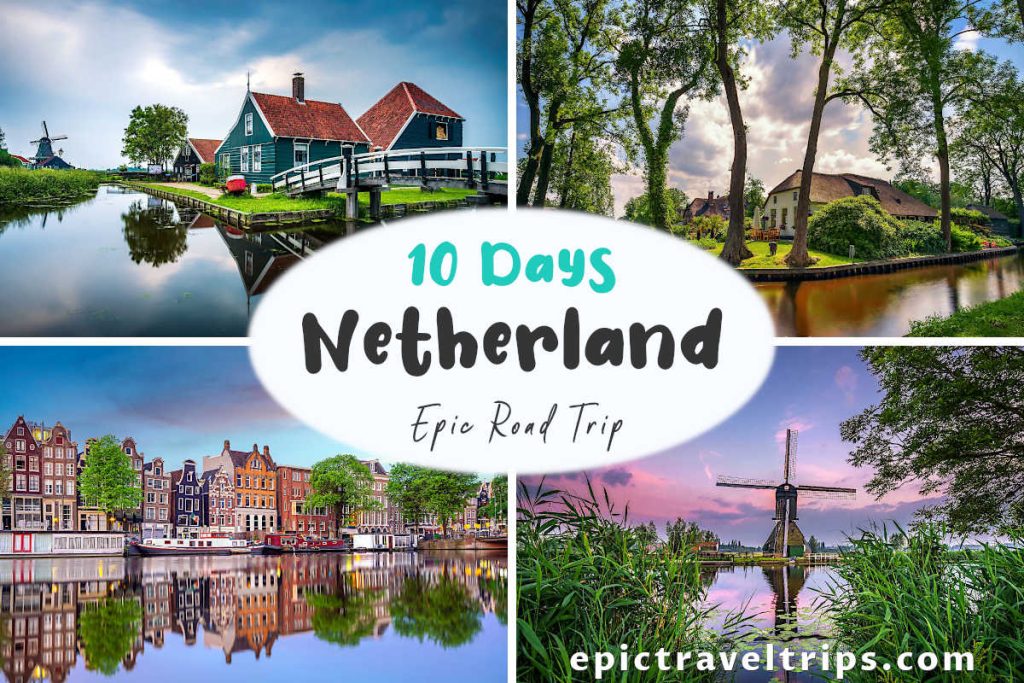
How To Reach De Haar Castle (Kasteel de Haar)?
Visiting Address: Kasteellaan 1, Haarzuilens
By car:
Our GPS navigation was confusing, and we ended up on the other side of the castle. So we circled until we found the main entrance. Finally, we parked at the parking lot in front of the castle’s entrance.
In addition, please note that in The Netherlands, there are ecological driving rules with a restricted speed limit. The daytime (06:00-19:00 h) speed limit has been restricted to 100 km/h (62 mph), while the general speed limit on motorways is 130 km/h (80 mph).
Here are few practical info about distances, time travel, and roads:
- Amsterdam – De Haar Castle, 31 km (19 mi.), 30 minutes drive, A2 highway
- Rotterdam – De Haar Castle, 50 km (31 mi.), 45 minutes drive, A20 & A12 highways
- Groningen – De Haar Castle, 200 km (124 mi.), 2h 15 minutes drive, A7 & A6 highways
By train:
From Amsterdam Central, take a train to Utrecht, switch to a train to The Hague, and at Vleuten station, switch to Bus 127 (read below by bus section for further directions). One way ticket is around € 12.55 with an OV chip card.
If you click this link and make a purchase, we earn a commission at no additional cost to you.
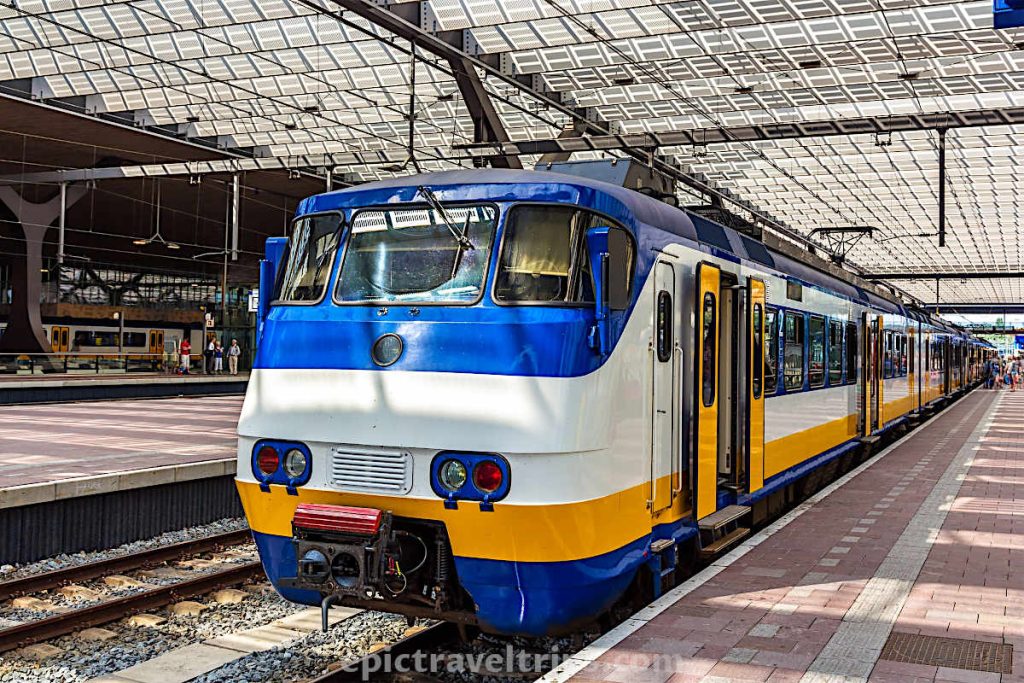
By bus:
From Vleuten station, take Bus 127 in the Kockengen direction, get off at the Brink, Haarzuilens stop. From there, it is a 15-minute walk (1.2 km 0.75 mi.) to the castle. One way ticket is around € 2.35 with an OV chip card. During weekends extra Bus line 111 also runs to De Haar Castle direction.
By bicycle:
It is possible to rent a bike at Vleuten station. Ride 12 minutes to the castle from there. You can park in the free bicycle shed opposite the entrance gate.
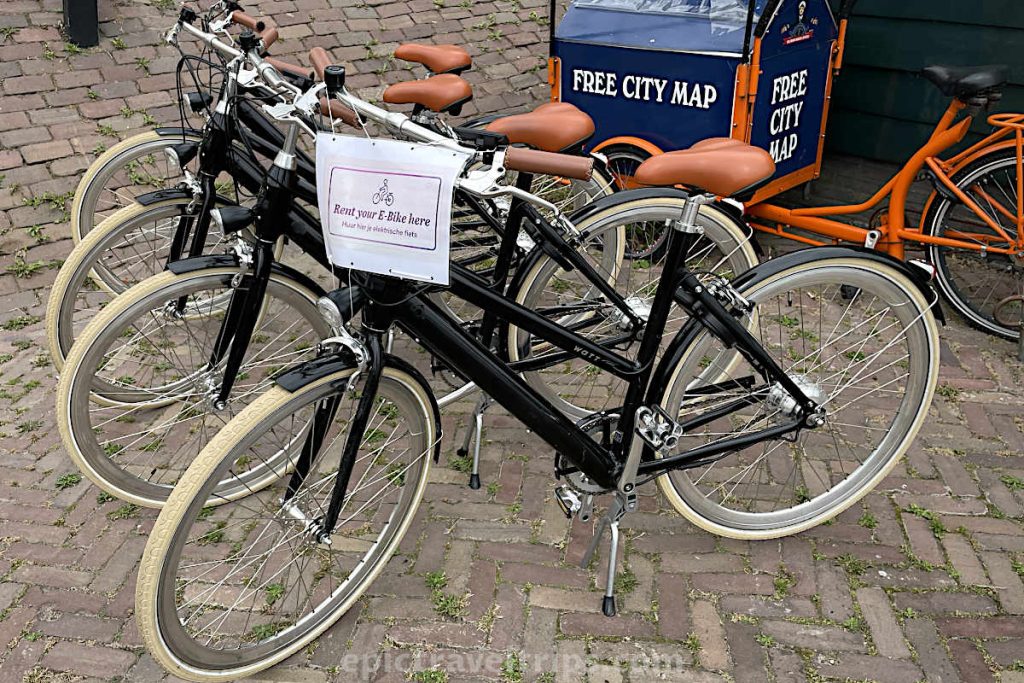
How Long Does It Take Visit To De Haar Castle (Kasteel de Haar)?
You can spend a couple of hours to up the whole day. It depends on what you want to see and at which pace.
3-4 hours are enough to see the exteriors of castle buildings, the parks, and the gardens at a tiptoe pace. Consider additional time to take photos or record videos, depending on your interests. On top of that is extra time to visit the castle interiors (halls, rooms, etc.) and maybe do additional shopping at souvenir shops. You must buy a ticket type that includes the castle’s interior visit and follow the dedicated time slot. Consider 1-2 extra hours for this additional visit.
In our humble opinion, the best option is to come earlier and pick a later time slot to enter the castle interior. First, walk around the castle through all the gardens, take photos, and get to know the ambiance. You will gradually become more knowledgeable about the castle’s history and renovation designs. When you are just about to enter the interior, the atmosphere and excitement to see the castle’s inner side are at your peak. After finishing the interior visit tour, you can walk the rest of the parks or even picnic, if you want, to gather your thoughts and relax in some corner of the castle’s complex.
We spent around three hours since we wanted on that day to combine this visit with the tour to our next visiting spot, the famous Windmills At Kinderdijk.
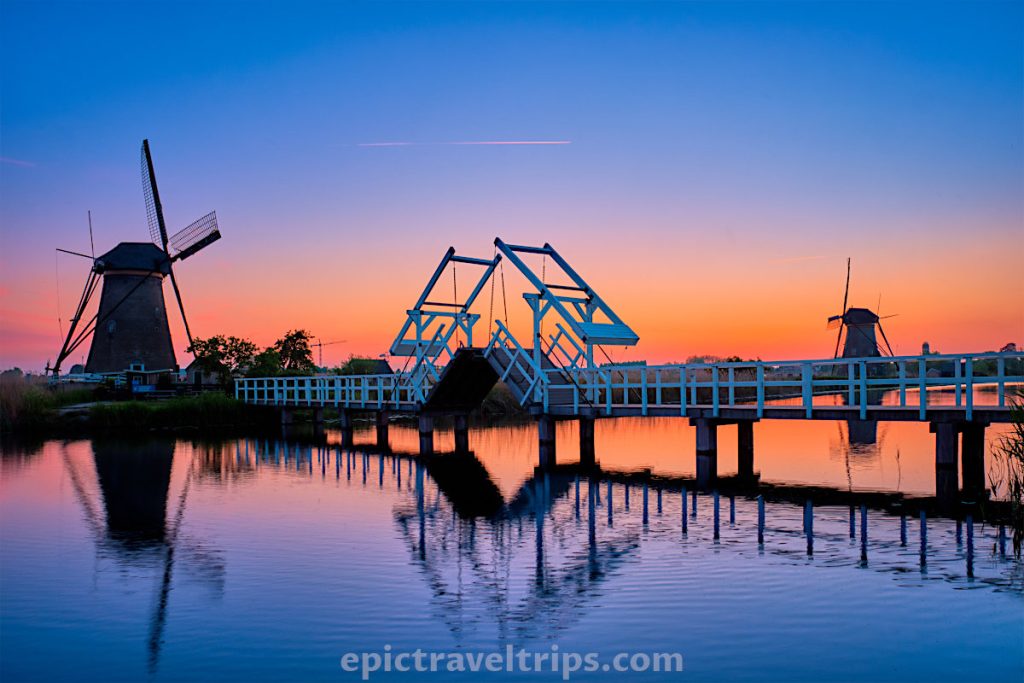
Where To Park For De Haar Castle (Kasteel de Haar)?
De Haar Castle has its own spacious outdoor car park with a capacity of 600 lots. The parking fee is € 6.00 per car. It takes around 15 minutes to get to the castle from the car park.
Please do not be confused when approaching the parking entrance barrier since you will not get a parking ticket. You drive through, park your car, and proceed to the ticket office.
In the ticket office, a charming, pleasant, and helpful young lady helped us purchase our tickets, and we included the parking ticket as well.
You will use the QR code on the parking ticket to exit the parking lot.
How Much Is De Haar Castle (Kasteel de Haar) Entrance Fee?
The ticket office doesn’t accept cash so prepare your cards or buy tickets online.
| Category | Only Park | Park & Castle |
|---|---|---|
| Adults | € 7,00 | € 18,00 |
| Children 4 – 12 years | € 5,00 | € 12,50 |
| Children < 4 years | free | free |
| Museum card | N/A | free |
| Parking | € 6,00 | € 6,00 |
* Take these prices as estimates.
De Haar Castle (Kasteel de Haar) – Opening Hours & Season
- Season: All year round (certain dates closed or shorter opening hours)
- Opening hours
- Ticket office: 09:00 – 16:30
- Gardens & park: 09:00 – 17:00 (18:00 during summer)
- Castle: 10:00 – 17:00 (the castle doors close at 16:30)
- Castle store: 10:00 – 17:00
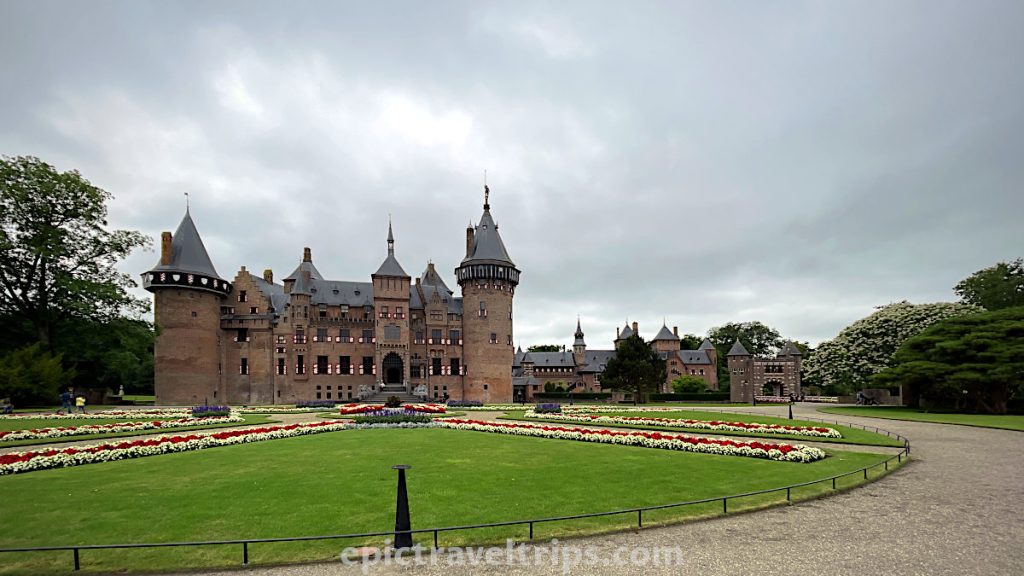
When Is The Best Time To Visit De Haar Castle (Kasteel de Haar)?
The summer months of June, July, and August provides the best chance for nice weather and colorful gardens flourishing with different flowers and plants. However, each season has its charm. Yellow colors dominate Autumn. Green colors are predominant in Spring. White colors paint the Winter, and All Colors burst in Summer.
Event – The Eflia Festival
De Haar Castle hosts the Elfia festival in Spring each year (usually in April). This festival revives the fairy tale spirit that accompanies each castle in the world. Elfia festival is the magic gate that allows you to set foot in the dream world by building your fantasy costume, story, and character. Furthermore, many like-minded join the same colorful show, enjoy music & dancing, tasty food, and more.
We visited De Haar Castle in mid-July and had an overcast day. We were happy with the visit.
Where To Eat In De Haar Castle (Kasteel de Haar)?
Two dining places within the complex offer food & drinks. The best option is to check on the website or at the entrance for the opening days and hours.
Coach House (Koetshuis de Haar)
The coach house (Koetshuis de Haar in Dutch) is at the entrance square and a good option for refreshment before or after a visit to the castle and parks. Here we could purchase hot & cold beverages, sandwiches, salads, soups, hot dishes, pastries, and snacks.
Tuynhuis
Tuynhuis is inside the park near the Châtelet and the beginning of Cross Pond (Kruisvijver in Dutch). Here we could purchase sandwiches, cold and warm drinks, and sweets.
Picnic Area
On the other side of the canal from the Large Court (Grote Cour in Dutch) garden is the picnic area. You can ask the Coach House (Koetshuis de Haar in Dutch) for a picnic basket.

Where To Stay Near De Haar Castle (Kasteel de Haar)?
Utrecht city is close by, so there is always an option to find accommodation and explore the city.
If you click this link and make a purchase, we earn a commission at no additional cost to you.
Another option is to move on and stay around Rotterdam so you can be closer to our next stop at Kinderdijk Windmills.
If you click this link and make a purchase, we earn a commission at no additional cost to you.

What Is Nearby De Haar Castle (Kasteel de Haar)?
We drew a Google Map of all places we visited on our The Netherlands: Epic 10 Days for Perfect Itinerary Road Trip with Maps. So you can easily navigate to the below-suggested locations.

Amsterdam
Amsterdam is the capital, the biggest city in the Netherlands, and a must-see location. Amsterdam’s canals, architecture, tall narrow brick buildings, and rich day and nightlife are just a few reasons to visit it.
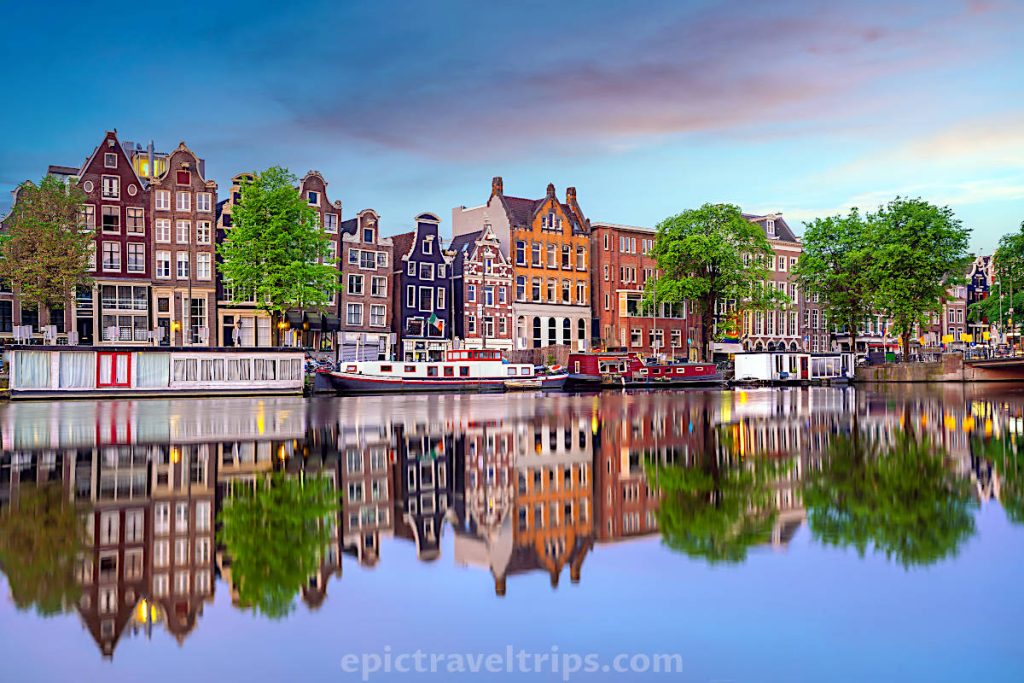
Kinderdijk
The Kinderdijk Windmills are a group of 19 windmills near the village of Kinderdijk. They were built in the 18th century to help manage water levels in the area. Because the Kinderdijk area is below sea level and prone to flooding. Although both Zaanse Schans and Kinderdijk are world-renowned windmills locations, the reasons for their building and existence are very different.
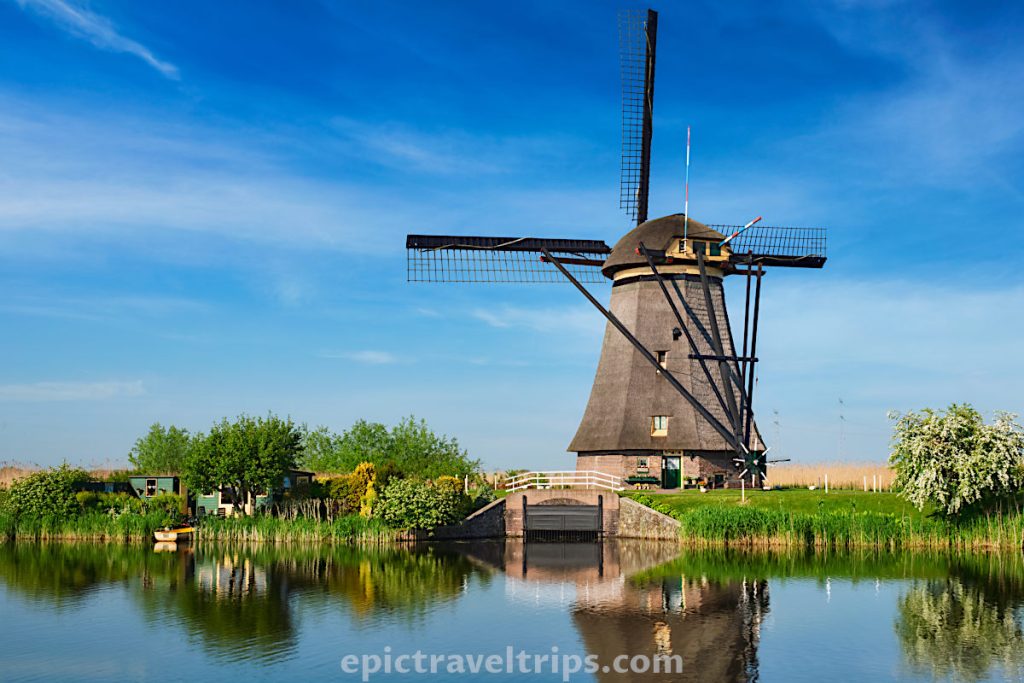
Rotterdam
Rotterdam is the second-largest city in the Netherlands and the biggest seaport in Europe. The city was raised like a Felix from the ashes after being almost completely demolished in WWII.

De Haar Castle (Kasteel de Haar) – Our Impressions
De Haar Castle is a significant heritage of Holland’s history, and we are more than happy that we had an opportunity to visit it. This visit just expanded our knowledge about many castles that we have already visited throughout Europe.
We drew a Google Map of all places visited in The Netherlands on our road trip. This will help you plan your own trip to both De Haar Castle and The Netherlands.
We wish you an epic trip!



